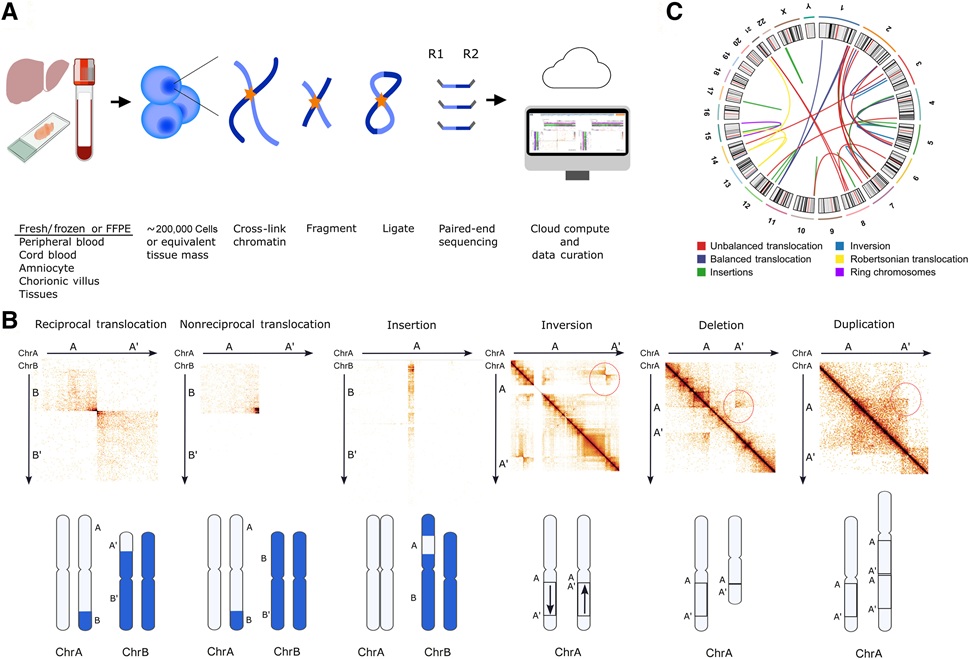Single-Cell Sequencing Reveals Clonal Diversity Among AML Patients
|
By LabMedica International staff writers Posted on 03 Nov 2020 |
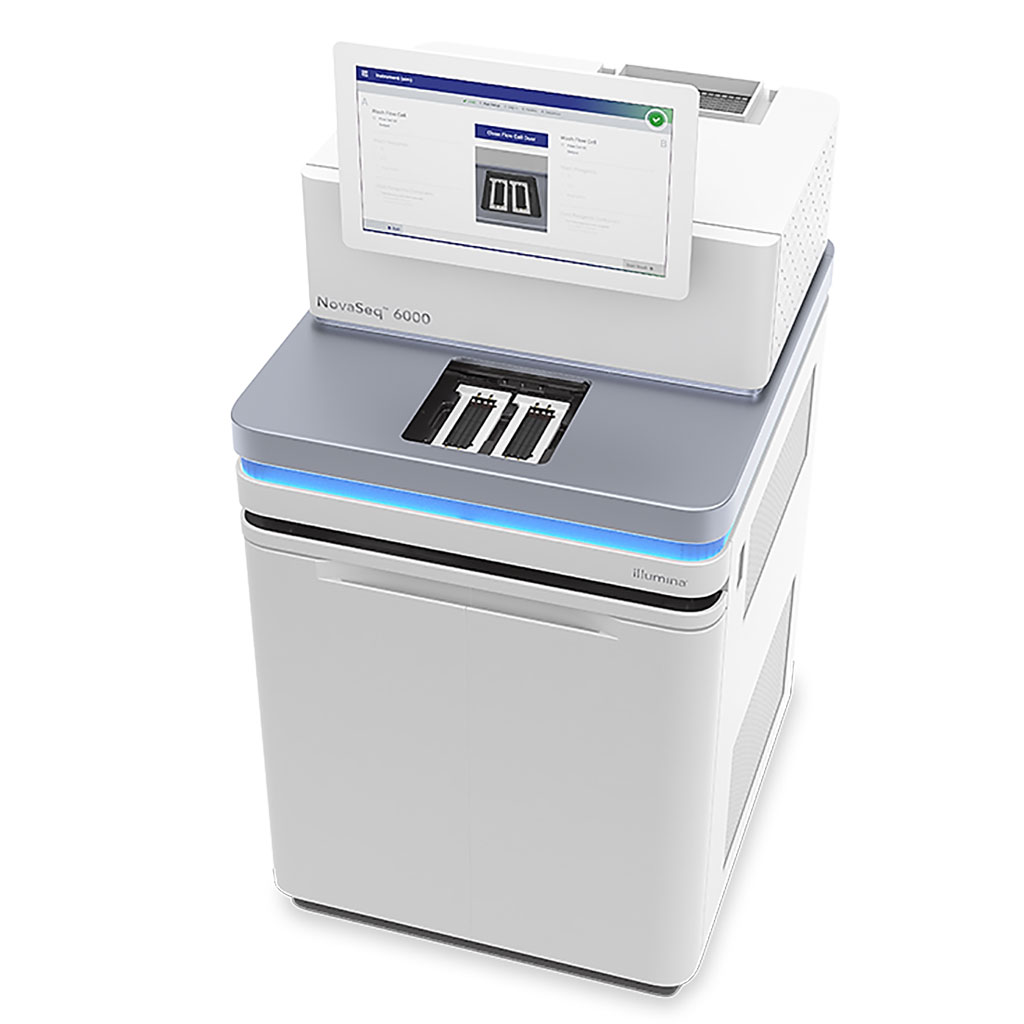
Image: The NovaSeq 6000 Sequencing System (Photo courtesy of Illumina).
A growing body of evidence supports the role of clonal diversity in therapeutic resistance, recurrence, and poor outcomes in cancer. Clonal diversity also reflects the history of the accumulation of somatic mutations within a tumor.
The ability to infer clonal heterogeneity and tumor phylogeny from bulk sequencing data is inherently limited, because bulk sequencing techniques cannot reliably infer mutation co-occurrences and hence often fail in accurately reconstructing clonal substructure. Single-cell DNA sequencing (scDNA-seq) can address some of these challenges.
A large team of scientists at the University of Texas MD Anderson Cancer Center (Houston, TX, USA) analyzed 154 samples (140 bone marrow mononuclear cells (BMMCs) and 14 peripheral blood mononuclear cells) from 123 patients with acute myeloid leukemia (AML) who had at least one somatic mutation covered by the targeted panel for scDNA-seq. Of the 123 patients, 108 patients were analyzed for the single-timepoint sample collected at pre-treatment (N = 98) or relapsed/refractory timepoint (N = 10). Among 123 patients, 97 were analyzed by scDNA-seq, 23 were analyzed by the simultaneous single-cell DNA and cell surface protein sequencing (scDNA+protein-seq), and three were analyzed by scDNA-seq and scDNA+protein-seq.
The pooled library was sequenced by one of the following sequencing platforms, MiSeq, HiSeq 4000, or NovaSeq 6000 (Illumina, Sand Diego, CA, USA) with 150- or 250-base pair (bp) paired-end multiplexed runs. The team performed droplet digital PCR (ddPCR) using QX200 Droplet Digital System (Bio-Rad Laboratories, Hercules, CA, USA) to confirm the variants that were detected by scDNA-seq, but were not detected by bulk-seq. Simultaneous profiling of DNA mutation and cell-surface immunophenotype (scDNA+protein-seq) was performed using the custom-designed panel kit and 10–15 oligo-conjugated antibodies (Mission Bio, South San Francisco, CA, USA). Immunophenotypes of the bone marrow cells from AML patients were assessed using eight-color flow cytometry on FACSCanto II (BD Biosciences, San Jose, CA, USA).
In all, the scientists sequenced more than 730,000 cells to find 543 somatic mutations in 31 cancer-related genes, 98% of which they orthogonally validated. The most common mutations they detected were in NPM1, followed by ones in DNMT3A and NRAS. They further found that while a number of mutations that were functionally redundant were found in the same patients, the alterations were often found in mutually exclusive clones. This extended to alterations affecting receptor tyrosine kinase (RTK)/Gas GTPase (RAS)/MAP kinase (MAPK) signaling pathway genes as well as IDH1 and IDH2 mutations and TET2 and IDH mutations. This suggested to the scientists that cells either do not need two mutations or that, when they appear together, the mutations are toxic, which could suggest a potential treatment avenue to investigate.
The investigators also analyzed genotype-phenotype correlations among the cells to find, for instance, that cells with NPM1 or IDH mutations expressed lower levels of CD34 and HLA-DR, while cells with a single TP53 mutations had CD34+CD117+ phenotype, but double TP53 mutations had a monocytic immunophenotype.
Koichi Takahashi, MD, PhD, the senior author of the study, said, “This information is also somewhat available from longitudinal bulk sequencing data longitudinally, but I think single-cell data uniquely provides this meticulous view of clone-by-clone dynamics, which is just simply not possible by bulk sequencing.” The study was published on October 21, 2020 in the journal Nature Communications.
The ability to infer clonal heterogeneity and tumor phylogeny from bulk sequencing data is inherently limited, because bulk sequencing techniques cannot reliably infer mutation co-occurrences and hence often fail in accurately reconstructing clonal substructure. Single-cell DNA sequencing (scDNA-seq) can address some of these challenges.
A large team of scientists at the University of Texas MD Anderson Cancer Center (Houston, TX, USA) analyzed 154 samples (140 bone marrow mononuclear cells (BMMCs) and 14 peripheral blood mononuclear cells) from 123 patients with acute myeloid leukemia (AML) who had at least one somatic mutation covered by the targeted panel for scDNA-seq. Of the 123 patients, 108 patients were analyzed for the single-timepoint sample collected at pre-treatment (N = 98) or relapsed/refractory timepoint (N = 10). Among 123 patients, 97 were analyzed by scDNA-seq, 23 were analyzed by the simultaneous single-cell DNA and cell surface protein sequencing (scDNA+protein-seq), and three were analyzed by scDNA-seq and scDNA+protein-seq.
The pooled library was sequenced by one of the following sequencing platforms, MiSeq, HiSeq 4000, or NovaSeq 6000 (Illumina, Sand Diego, CA, USA) with 150- or 250-base pair (bp) paired-end multiplexed runs. The team performed droplet digital PCR (ddPCR) using QX200 Droplet Digital System (Bio-Rad Laboratories, Hercules, CA, USA) to confirm the variants that were detected by scDNA-seq, but were not detected by bulk-seq. Simultaneous profiling of DNA mutation and cell-surface immunophenotype (scDNA+protein-seq) was performed using the custom-designed panel kit and 10–15 oligo-conjugated antibodies (Mission Bio, South San Francisco, CA, USA). Immunophenotypes of the bone marrow cells from AML patients were assessed using eight-color flow cytometry on FACSCanto II (BD Biosciences, San Jose, CA, USA).
In all, the scientists sequenced more than 730,000 cells to find 543 somatic mutations in 31 cancer-related genes, 98% of which they orthogonally validated. The most common mutations they detected were in NPM1, followed by ones in DNMT3A and NRAS. They further found that while a number of mutations that were functionally redundant were found in the same patients, the alterations were often found in mutually exclusive clones. This extended to alterations affecting receptor tyrosine kinase (RTK)/Gas GTPase (RAS)/MAP kinase (MAPK) signaling pathway genes as well as IDH1 and IDH2 mutations and TET2 and IDH mutations. This suggested to the scientists that cells either do not need two mutations or that, when they appear together, the mutations are toxic, which could suggest a potential treatment avenue to investigate.
The investigators also analyzed genotype-phenotype correlations among the cells to find, for instance, that cells with NPM1 or IDH mutations expressed lower levels of CD34 and HLA-DR, while cells with a single TP53 mutations had CD34+CD117+ phenotype, but double TP53 mutations had a monocytic immunophenotype.
Koichi Takahashi, MD, PhD, the senior author of the study, said, “This information is also somewhat available from longitudinal bulk sequencing data longitudinally, but I think single-cell data uniquely provides this meticulous view of clone-by-clone dynamics, which is just simply not possible by bulk sequencing.” The study was published on October 21, 2020 in the journal Nature Communications.
Latest Hematology News
- ADLM’s New Coagulation Testing Guidance to Improve Care for Patients on Blood Thinners
- Viscoelastic Testing Could Improve Treatment of Maternal Hemorrhage
- Pioneering Model Measures Radiation Exposure in Blood for Precise Cancer Treatments
- Platelets Could Improve Early and Minimally Invasive Detection of Cancer
- Portable and Disposable Device Obtains Platelet-Rich Plasma Without Complex Equipment
- Disposable Cartridge-Based Test Delivers Rapid and Accurate CBC Results
- First Point-of-Care Heparin Monitoring Test Provides Results in Under 15 Minutes

- New Scoring System Predicts Risk of Developing Cancer from Common Blood Disorder
- Non-Invasive Prenatal Test for Fetal RhD Status Demonstrates 100% Accuracy
- WBC Count Could Predict Severity of COVID-19 Symptoms
- New Platelet Counting Technology to Help Labs Prevent Diagnosis Errors
- Streamlined Approach to Testing for Heparin-Induced Thrombocytopenia Improves Diagnostic Accuracy
- POC Hemostasis System Could Help Prevent Maternal Deaths
- New Test Assesses Oxygen Delivering Ability of Red Blood Cells by Measuring Their Shape
- Personalized CBC Testing Could Help Diagnose Early-Stage Diseases in Healthy Individuals
- Non-Invasive Test Solution Determines Fetal RhD Status from Maternal Plasma
Channels
Clinical Chemistry
view channel
VOCs Show Promise for Early Multi-Cancer Detection
Early cancer detection is critical to improving survival rates, but most current screening methods focus on individual cancer types and often involve invasive procedures. This makes it difficult to identify... Read more
Portable Raman Spectroscopy Offers Cost-Effective Kidney Disease Diagnosis at POC
Kidney disease is typically diagnosed through blood or urine tests, often when patients present with symptoms such as blood in urine, shortness of breath, or weight loss. While these tests are common,... Read moreHematology
view channel
ADLM’s New Coagulation Testing Guidance to Improve Care for Patients on Blood Thinners
Direct oral anticoagulants (DOACs) are one of the most common types of blood thinners. Patients take them to prevent a host of complications that could arise from blood clotting, including stroke, deep... Read more
Viscoelastic Testing Could Improve Treatment of Maternal Hemorrhage
Postpartum hemorrhage, severe bleeding after childbirth, remains one of the leading causes of maternal mortality worldwide, yet many of these deaths are preventable. Standard care can be hindered by delays... Read more
Pioneering Model Measures Radiation Exposure in Blood for Precise Cancer Treatments
Scientists have long focused on protecting organs near tumors during radiotherapy, but blood — a vital, circulating tissue — has largely been excluded from dose calculations. Each blood cell passing through... Read moreImmunology
view channel
Chip Captures Cancer Cells from Blood to Help Select Right Breast Cancer Treatment
Ductal carcinoma in situ (DCIS) accounts for about a quarter of all breast cancer cases and generally carries a good prognosis. This non-invasive form of the disease may or may not become life-threatening.... Read more
Blood-Based Liquid Biopsy Model Analyzes Immunotherapy Effectiveness
Immunotherapy has revolutionized cancer care by harnessing the immune system to fight tumors, yet predicting who will benefit remains a major challenge. Many patients undergo costly and taxing treatment... Read moreMicrobiology
view channel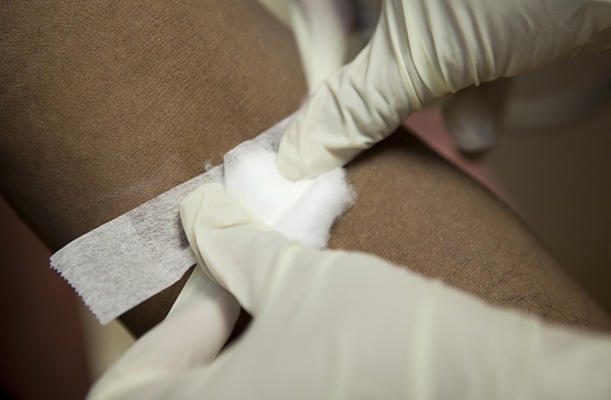
15-Minute Blood Test Diagnoses Life-Threatening Infections in Children
Distinguishing minor childhood illnesses from potentially life-threatening infections such as sepsis or meningitis remains a major challenge in emergency care. Traditional tests can take hours, leaving... Read more
High-Throughput Enteric Panels Detect Multiple GI Bacterial Infections from Single Stool Swab Sample
Gastrointestinal (GI) infections are among the most common causes of illness worldwide, leading to over 1.7 million deaths annually and placing a heavy burden on healthcare systems. Conventional diagnostic... Read morePathology
view channel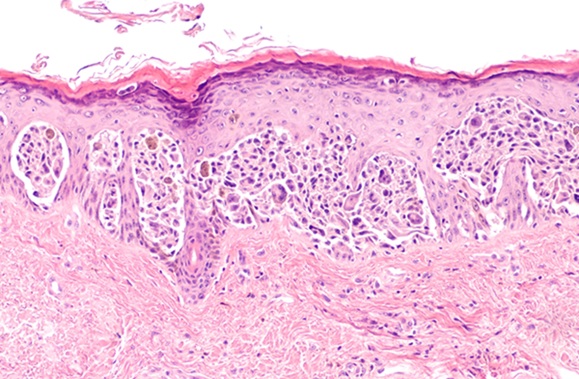
AI Tool Improves Accuracy of Skin Cancer Detection
Diagnosing melanoma accurately in people with darker skin remains a longstanding challenge. Many existing artificial intelligence (AI) tools detect skin cancer more reliably in lighter skin tones, often... Read more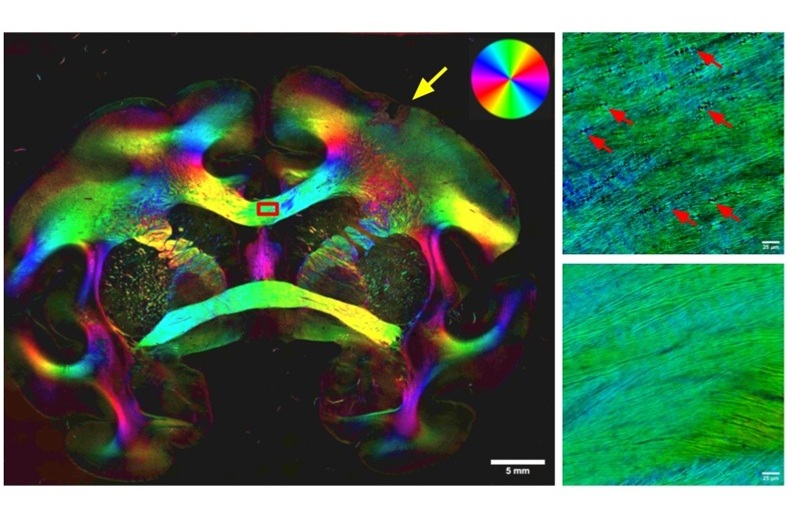
Highly Sensitive Imaging Technique Detects Myelin Damage
Damage to myelin—the insulating layer that helps brain cells function efficiently—is a hallmark of many neurodegenerative diseases, age-related decline, and traumatic injuries. However, studying this damage... Read moreTechnology
view channel
AI Model Achieves Breakthrough Accuracy in Ovarian Cancer Detection
Early diagnosis of ovarian cancer remains one of the toughest challenges in women’s health. Traditional tools such as the Risk of Ovarian Malignancy Algorithm (ROMA) can struggle to distinguish between... Read more
Portable Biosensor Diagnoses Psychiatric Disorders Using Saliva Samples
Early diagnosis of psychiatric disorders such as depression, schizophrenia, and bipolar disorder remains one of medicine’s most pressing challenges. Current diagnostic methods rely heavily on clinical... Read more
Cell-Sorting Device Uses Electromagnetic Levitation to Precisely Direct Cell Movement
Sorting different cell types—such as cancerous versus healthy or live versus dead cells—is a critical task in biology and medicine. However, conventional methods often require labeling, chemical exposure,... Read moreIndustry
view channel
Co-Diagnostics Forms New Business Unit to Develop AI-Powered Diagnostics
Co-Diagnostics, Inc. (Salt Lake City, UT, USA) has formed a new artificial intelligence (AI) business unit to integrate the company's existing and planned AI applications into its Co-Dx Primer Ai platform.... Read more


















